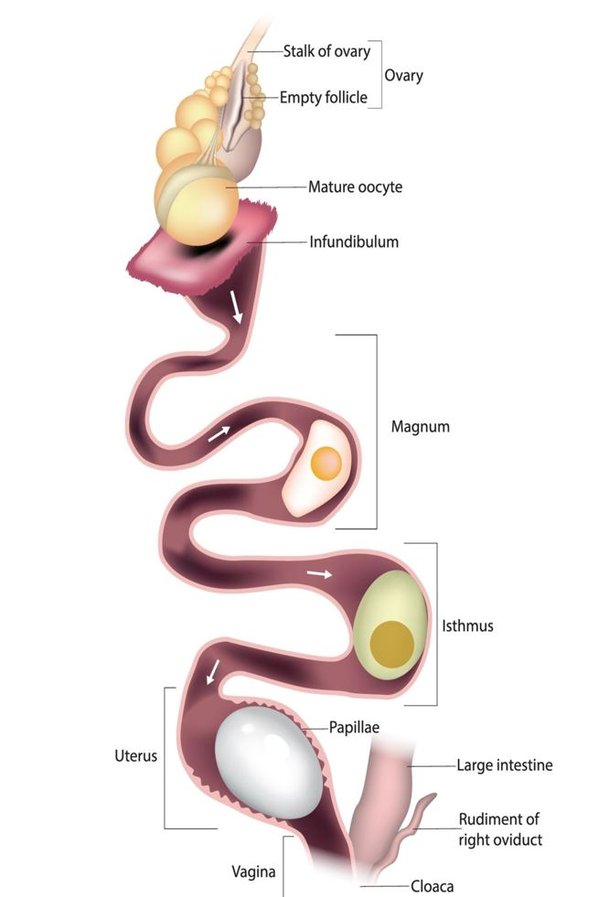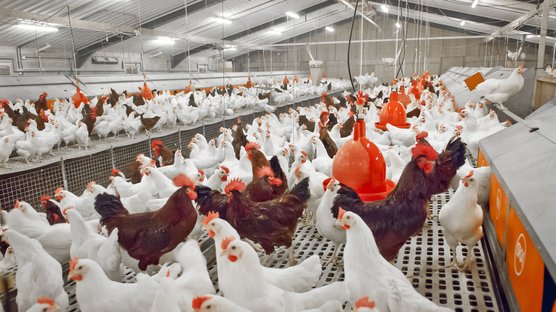
Published on Jan. 17, 2023
Blood and Meat spots found in eggs
Occasionally, eggs can be found that contain blood or meat spots (also called inclusions). From a consumer experience point of view this is unwanted, as most often they associate it with an egg containing an embryo, which gives them an unpleasant feeling. Luckily, today’s egg grading equipment can take out most of these eggs containing blood or meat spots. But as this will grade down the eggs, the extra value of grade A eggs is gone.
Therefore, from a poultry breeding point of view, the inside of an egg should look clean and fresh, only showing the egg white, the chalazae, and the yolk. Differences in the occurrence of blood and meat spots occur between white and brown egg layers, in the favor of white eggs layers, as they have a lower probability to produce eggs containing blood and meat spots. Next to breed, underlying diseases, or stress events can cause the occurrence (or a sudden increase in the occurrence) of blood and meat spots.
The blood and meat spots occur during the egg formation process. The ovary, the organ in the chicken where the follicle development and egg yolk formation take place has an extremely good blood supply. The yolk is covered with a wall containing loads of small blood vessels. This blood supply is needed as the nutrients for the follicle development and yolk formation travel along via the blood. Normally, the yolk sac will burst at the stigma, a position at where the yolk sac is hardly containing any blood, and the yolk will be released without the presence of blood. But now and then it can occur that the yolk is releases prior to arriving at the stigma, causing a bleeding as the result of small ruptures of blood vessels. In this event blood can be carried along with the yolk throughout the oviduct. This results in an egg containing a blood spot. But this is not the only place where blood spots can originate from, also the oviduct is an organ with a good blood supply, any disrupting during the further egg formation can cause bleedings (hemorrhages) that can be included in the process of egg formation.

When bleedings occur after the eggshell formation has started, the blood spot will be visible in or at the shell wall. When large blood stripes are seen at the outside of the egg, it is often an indicator that vent or cloaca pecking is occurring, or that birds have developed prolapse (birds that produce the large eggs are more prone to develop severe problems with prolapse.
Next to bloods spots, meat spots can also be found in table eggs. Instead of containing blood, these eggs contain body tissue, either from the ovary, or from the oviduct. Meat spots can be harder to identify with the egg grading equipment, as they do not always need to contain blood. The occurrence of both blood and meat spots can go up when flocks are getting older, and mostly seen in brown egg chicken breeds.
As the occurrence of blood and meat spots is often related to external factors, like underlying disease (infectious bronchitis is often associated with reduced egg quality, not only form the outside as well as the inside), a shortage in vitamin A and K, feed containing molds or high levels of mycotoxins, deficiencies in biotin and / or magnesium, disruption in drinking water supply, sudden stressors that causes flock disturbances (especially in the afternoon and during the night, during vaccination or catching), wrong lighting schedules like continuous lighting when birds are in production, there is a small genetic component as well. In general, heritabilities for egg laying chickens are what we call low, i.e., less than 15% of the variation that is observed can be related back to genetics. But in our breeding program we keep track of the occurrence of blood and meat spots from all our potential breeding candidates and are doing our utmost to select against this undesired phenomenon. Progress via genetic selection is therefor low, but the prevalence of blood and meat spots in eggs have been reduced by more than half during the past 60 years.
When you observe a sudden increase of blood and meat spots in your flock, we strongly advise you to contact your poultry veterinarian so he can look into the current health status of your flock, besides it is always good to store a sample of the chicken feed that can be used for further analyses.





